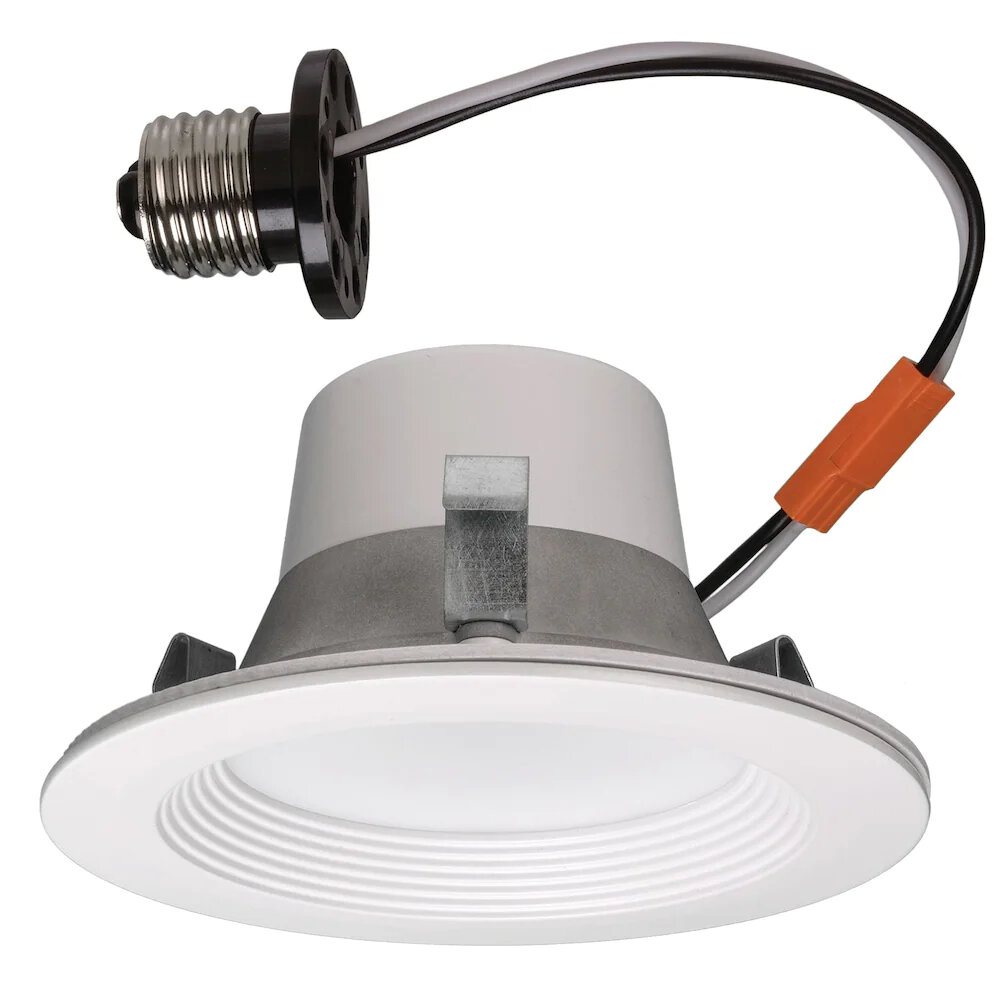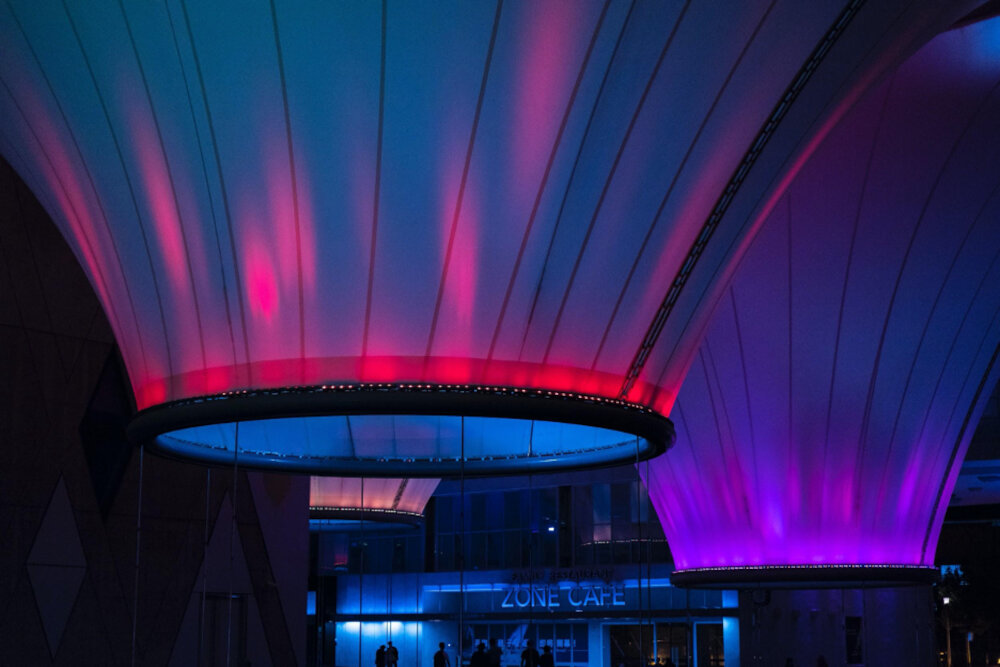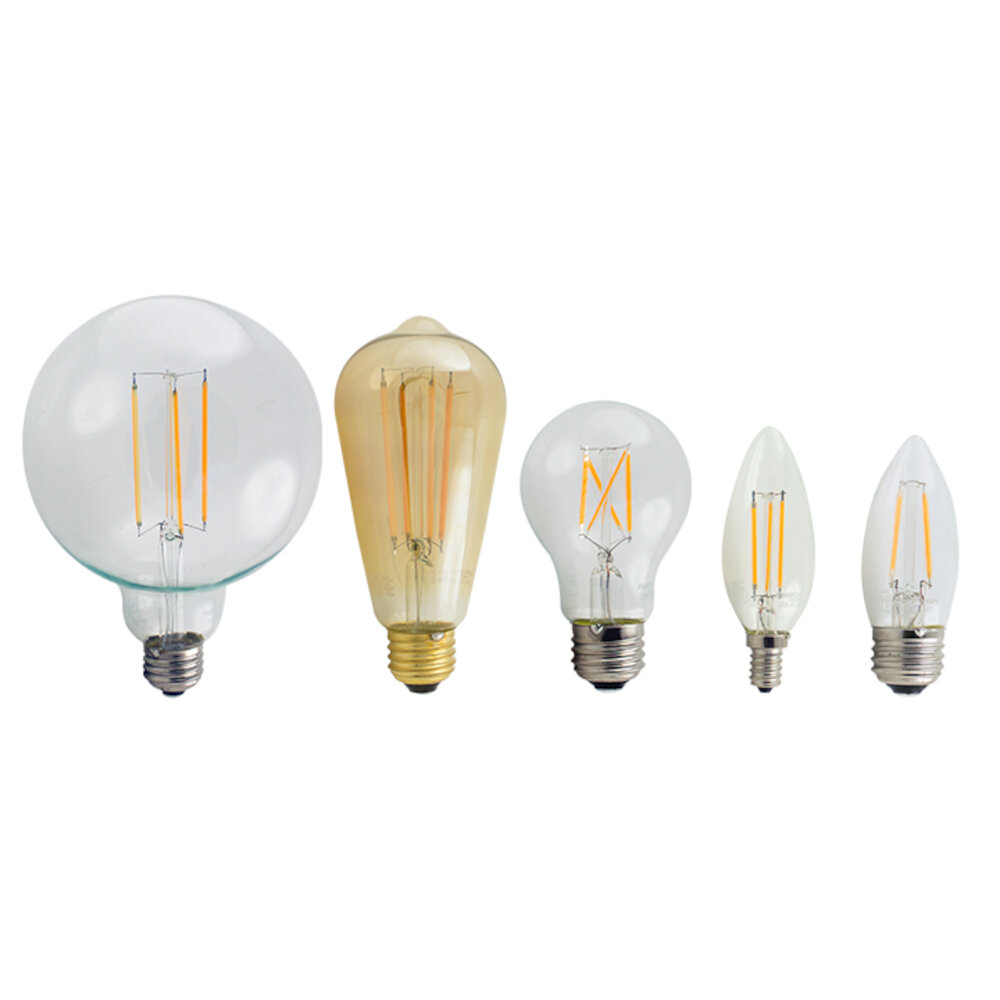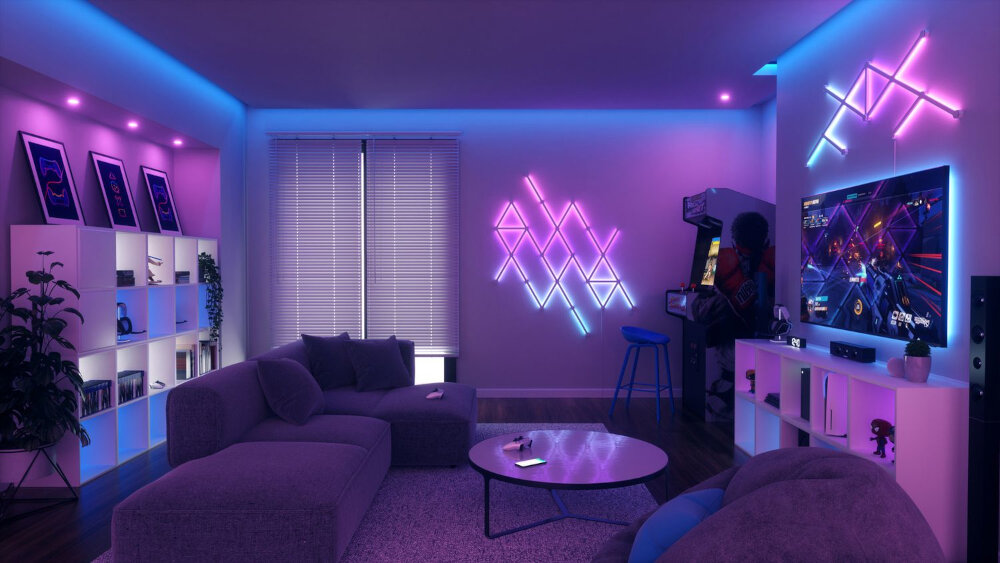Why Do LED Lights Flicker? Exploring the Causes and Solutions

LED lights are becoming increasingly popular in households and businesses due to their energy efficiency and long-lasting lifespan. However, one issue that can arise with LED lights is flickering. Flickering can be a nuisance and can also indicate an underlying problem with the LED lights or the electrical system. In this article, we will explore the various causes of LED light flickering and the solutions to resolve this issue. There are several reasons why LED lights may flicker, including voltage fluctuations, incompatible dimmer switches, and faulty wiring. Understanding the root cause of the flickering can help determine the best course of action to fix the issue. Additionally, addressing the flickering early can prevent further damage to the LED lights and the electrical system. Therefore, it is important to be aware of the causes and solutions to LED light flickering to ensure optimal performance and longevity of the lighting system.
Understanding LED Lights

LED lights, or Light Emitting Diodes, are a type of lighting technology that have become increasingly popular in recent years due to their energy efficiency and longevity. Unlike traditional incandescent bulbs, LED lights produce light through a process called electroluminescence, which involves the movement of electrons through a semiconductor material. This process is much more efficient than the heating of a filament, which is how incandescent bulbs produce light. LED lights also last much longer than traditional bulbs, with lifespans of up to 50,000 hours or more. Despite their many advantages, LED lights can still experience flickering, which is a rapid and repeating change in light intensity. This can be caused by a number of factors, including voltage fluctuations in the electrical supply, the use of incompatible dimmer switches, or problems with the LED driver or power supply. Flickering can be annoying and distracting, but it can also have negative effects on our health, as it can cause headaches, eye strain, and other symptoms. Understanding the causes of LED flickering and how to address them is essential for ensuring that LED lights perform optimally and provide the best possible lighting experience.
LED lights, or Light Emitting Diodes, are a highly energy-efficient, eco-friendly lighting technology that has become increasingly popular in recent years. Unlike traditional incandescent bulbs, which produce light by heating a filament, LED lights use a semiconductor to generate light when an electric current is passed through it. This means that LED lights consume far less electricity, generate less heat, and last much longer than other types of lighting. Additionally, LED lights are highly versatile and can be used in a variety of applications, from residential lighting to commercial and industrial settings. Despite their many advantages, however, LED lights can sometimes experience flickering, which can be caused by a range of factors, including voltage fluctuations, incompatible dimmer switches, or faulty wiring.
LED lights are a type of lighting that uses semiconductors to convert electrical energy into light. They work by emitting light when an electric current is passed through them. The light produced by LEDs is much more efficient than traditional incandescent bulbs because they do not produce heat. However, LED lights can sometimes flicker, which can be frustrating for those who use them. This flickering can be caused by a number of factors, including electrical issues, problems with the LED driver, or issues with the circuit board. To prevent flickering, it is important to ensure that the LED lights are properly installed and that the wiring is correct. Additionally, using high-quality LED bulbs and drivers can help to minimize flickering and provide a more consistent source of light.
LED lights have become increasingly popular in recent years due to their numerous advantages. Firstly, they are energy-efficient, consuming up to 90% less energy than traditional incandescent bulbs, resulting in lower electricity bills and a reduced carbon footprint. Additionally, they have a significantly longer lifespan, lasting up to 25 times longer than traditional bulbs, reducing the need for frequent replacements. LED lights are also versatile, as they come in a variety of colors and can be used for various purposes, such as indoor lighting, outdoor lighting, and even in electronic devices such as televisions and smartphones. Lastly, LED lights are environmentally friendly, as they do not contain harmful chemicals such as mercury and can be recycled. Overall, LED lights are an excellent choice for those who want to save money, reduce their carbon footprint, and have long-lasting, versatile lighting solutions.
LED lights have become increasingly popular due to their energy efficiency, longevity, and versatility. They are commonly used in a variety of settings, including homes, offices, and outdoor spaces. LED lights can be used for general lighting purposes, such as overhead lighting in a room or workspace, as well as for specific tasks, such as reading or cooking. They are also commonly used for decorative purposes, such as accent lighting or highlighting artwork or architectural features. Additionally, LED lights are frequently used in commercial and industrial settings, such as warehouses, factories, and parking lots, due to their durability and ability to withstand harsh conditions. Overall, the uses of LED lights continue to expand as technology advances and their benefits become more widely recognized.
Causes of LED Lights Flickering

LED lights have become a popular lighting solution due to their energy efficiency, long life span, and low maintenance. However, despite their numerous advantages, LED lights are not immune to flickering, which can be an annoying and frustrating experience for users. There are several causes of LED lights flickering, including power supply issues, wiring problems, and the use of incompatible dimmer switches. Power supply issues are one of the most common causes of LED flickering. This occurs when the voltage supplied to the LED light fluctuates or drops below the rated voltage. This can happen when the power supply is not compatible with the LED light, or the power supply is overloaded with too many LED lights. Another cause of LED lights flickering is wiring problems, which can occur if the wiring is not properly connected or if the wires are damaged. Wiring problems can cause the LED lights to flicker, dim, or turn off completely. In addition, the use of incompatible dimmer switches can also cause LED lights to flicker. This is because LED lights require a specific type of dimmer switch that is designed to work with LED lights. Using a dimmer switch that is not compatible with LED lights can cause the lights to flicker, dim, or not turn on at all. By understanding the causes of LED lights flickering, users can take the necessary steps to prevent and resolve this issue, and enjoy the many benefits of LED lighting.
Voltage fluctuations are rapid changes in the voltage level that can occur in an electrical circuit. These fluctuations can be caused by a variety of factors, including changes in the load on the circuit, faulty wiring, and fluctuating power supply. When voltage fluctuations occur in LED lighting systems, they can result in flickering, dimming, or even complete failure of the lights. These issues not only affect the performance of the lighting but can also cause eye strain and headaches for those exposed to the flickering lights. To avoid voltage fluctuations, it is important to ensure that the electrical system is properly installed and maintained, and that any issues are addressed promptly to prevent potential damage to the LED lighting system.
As LED lights age, they may start to flicker due to various reasons such as power supply issues, thermal stress, or component failure. Power supply issues can occur when the LED driver starts to degrade or malfunction, causing the LED lights to receive an unstable voltage. Thermal stress is another factor that can cause flickering in LED lights, as the components can heat up and reduce their efficiency over time. Additionally, component failure can also contribute to flickering in LED lights, particularly if the LED chip or driver fails. To prevent flickering in LED lights, it is essential to select high-quality components, install proper heat sinks, and ensure that the power supply is stable and reliable.
One of the common causes of LED lights flickering is the use of incompatible dimmer switches. Unlike traditional incandescent bulbs, LEDs require a specific type of dimmer switch that is compatible with their electronic components. If a non-compatible dimmer switch is used, it can result in flickering, buzzing, or even damage to the LED bulbs or the dimmer switch itself. This is because the electrical current that flows through the switch is not properly regulated, causing fluctuations in the voltage and current that the LED bulbs are receiving. To avoid this issue, it is important to ensure that the dimmer switch is specifically designed for use with LED lights.
Overheating is one of the most common causes of LED flickering. When LED lights overheat, the internal components can become damaged or degrade over time, leading to flickering or even failure of the bulb. This can occur when LED lights are used in enclosed fixtures, which can trap heat and prevent proper heat dissipation. Additionally, poor ventilation, high ambient temperatures, or excessive wattage can also cause overheating. To mitigate this issue, it is recommended to use LED bulbs with appropriate wattage for the fixture, ensure proper ventilation, and avoid using LED lights in enclosed fixtures unless they are specifically designed for such applications.
Electrical interference is one of the main culprits behind LED lights flickering. This phenomenon occurs when other electronic devices, such as power tools or appliances, produce electromagnetic fields that interfere with the electrical current flowing through the LED driver. The resulting fluctuations in the current can cause the LED lights to flicker or even turn off completely. Additionally, poor wiring or faulty electrical connections can also contribute to electrical interference, creating an unstable electrical environment that can wreak havoc on LED lighting systems. To mitigate the effects of electrical interference, it is essential to ensure proper wiring and grounding, as well as using high-quality LED drivers that can withstand voltage fluctuations and electromagnetic interference.
Solutions to LED Lights Flickering

LED lights are becoming increasingly popular due to their energy efficiency, longevity and low maintenance. However, sometimes they can flicker, which can be a source of frustration for many people. Flickering can occur due to various reasons, such as incompatible dimmer switches, loose wiring, voltage fluctuations and electromagnetic interference. Fortunately, there are several solutions to LED lights flickering that can help to eliminate this problem. One of the solutions to LED lights flickering is to check the dimmer switch compatibility. LED lights require a compatible dimmer switch to work properly. Therefore, if you experience flickering, you may need to replace your existing dimmer switch with one that is compatible with LED lights. Additionally, you can try adjusting the dimmer switch to see if it reduces the flickering. If the flickering persists, it may be necessary to consult an electrician to install a new dimmer switch that is designed specifically for LED lights. Another solution to LED lights flickering is to check the wiring. Loose or damaged wiring can cause flickering, so it is important to ensure that all connections are secure and tight. If you are unsure about the wiring, it is best to consult an electrician to inspect and repair any loose or damaged wiring. Additionally, voltage fluctuations can also cause flickering, so it may be necessary to install a voltage stabilizer to regulate the voltage and prevent flickering. Finally, electromagnetic interference from other electronic devices can also cause flickering, so it is essential to keep the LED lights away from any sources of interference.
If you’re experiencing flickering in your LED lights, the problem could be with your dimmer switch. Not all dimmer switches are compatible with LED lights, and using the wrong type can cause flickering and other issues. To avoid this problem, it’s important to use LED-compatible dimmer switches. These switches are specifically designed to work with LED lights, providing smooth and consistent dimming without any flickering or other problems. By upgrading to an LED-compatible dimmer switch, you can enjoy the benefits of LED lighting without any of the annoying flickering or other issues that can make it less enjoyable.
One of the most common reasons for LED lights to flicker is due to old or damaged components. Over time, the electronic components in LED lights can wear out or become damaged, resulting in inconsistent power delivery and flickering. This can be especially problematic in outdoor lighting, where the elements can take a toll on the electronics. Replacing old or damaged LED lights can help eliminate flickering and improve overall performance. It is important to choose high-quality LED lights that are designed to withstand the elements for maximum longevity and reliability.
One of the most effective solutions to prevent LED lights from flickering is to install voltage stabilizers or regulators. These devices work by regulating the voltage that reaches the LED lights, ensuring a steady and consistent flow of electricity. Voltage fluctuations can cause LED lights to flicker, especially when there are power surges or drops in the electrical supply. Voltage stabilizers or regulators help to maintain the voltage at a constant level, preventing any sudden spikes or dips that can affect the performance of LED lights. Installing these devices can help to improve the lifespan of LED lights and ensure that they operate smoothly and efficiently.
One of the crucial factors in ensuring the longevity and optimal performance of LED lights is to keep them cool. LED lights generate heat, and when the temperature increases beyond a certain point, it can cause the lights to flicker or even fail. Therefore, it is essential to provide adequate ventilation and cooling to the LED lights. The use of heat sinks, fans, and thermal management systems can help dissipate the heat and maintain the temperature within the safe operating range. Additionally, choosing high-quality LED lights with advanced cooling features can also help prevent flickering and ensure consistent and reliable lighting performance.
Electrical interference is a common culprit for LED light flickering. This occurs when other electronic devices, such as radio transmitters, fluorescent lights, or even appliances, produce electromagnetic fields that disrupt the normal operation of the LED lights. The interference can cause the LED lights to flicker, flash, or dim unexpectedly. To prevent this issue, it is important to check for any electronic devices that may be interfering with the LED lights and relocate them to a different area or turn them off when using the LED lights. Additionally, installing filters or surge protectors can help reduce the risk of electrical interference and keep the LED lights functioning properly.
Other LED Light Issues

LED lights are a popular choice for many homes and businesses, but they can come with their fair share of issues. In addition to flickering, other LED light problems include dimming, color inconsistency, buzzing, and even complete failure. Dimming issues can occur when using LED lights with incompatible dimmer switches, causing flickering or uneven lighting. Color inconsistency is another issue that can arise, causing some lights to appear warmer or cooler in color than others. Buzzing can also be an issue, especially with cheaper LED bulbs, as they may produce an audible humming or buzzing noise when in use. Finally, LED lights can experience total failure, either due to manufacturing defects or from being exposed to excessive heat or moisture. To address these other LED light issues, it is important to first identify the root cause of the problem. For example, if color inconsistency is the issue, it may be necessary to replace the faulty lights with ones that have a more consistent color temperature. Similarly, if buzzing is the problem, upgrading to a better quality LED bulb may help. For flickering and dimming issues, it may be necessary to replace the dimmer switch with one that is compatible with the LED lights being used. Additionally, ensuring proper ventilation and avoiding exposing LED lights to excessive heat or moisture can help prevent total failure. By addressing these other LED light issues, users can enjoy the many benefits that LED lighting has to offer without having to deal with frustrating problems.
LED lights not turning on can be caused by several factors, including loose connections, faulty wiring, or a malfunctioning power supply. It is important to first check the connections and ensure they are securely fastened. Next, verify that the wiring is not damaged or exposed, which could cause a short circuit. If these issues are ruled out, the power supply may need to be tested or replaced. Additionally, the LED bulb itself could be faulty and require replacement. It is best to consult a professional to diagnose and resolve the issue to ensure the safety and longevity of the LED lighting system.
One of the most common issues with LED lights is flickering when turned off. This can be caused by a variety of factors such as residual current, faulty wiring, or incompatible dimmer switches. Residual current occurs when electricity continues to flow through the circuit even when the switch is turned off, leading to a flickering effect. Faulty wiring can also cause this issue, as can using a dimmer switch that is not compatible with LED lights. In order to solve this problem, it is important to identify the underlying cause and take appropriate measures such as replacing the dimmer switch or rewiring the circuit.
As LED lights age, they may begin to dim over time due to a variety of factors. The primary cause of this dimming is the degradation of the LED chip itself, which can occur due to high temperatures, humidity, and other environmental factors. Additionally, the power supply and driver circuitry of the LED light may also degrade over time, leading to decreased performance and eventual failure. To prevent or mitigate this dimming effect, it is important to choose high-quality LED lights, properly maintain them, and avoid exposing them to extreme environmental conditions. Regular cleaning and maintenance can also help to extend the lifespan of LED lights and ensure optimal performance over time.
LED lights flickering is a common issue that can be caused by a variety of factors. One of the primary causes is voltage fluctuation, which can occur due to issues with the electrical system or the use of incompatible dimmer switches. Another potential cause is a faulty LED driver or a poor-quality LED bulb. In addition, environmental factors such as temperature and humidity can also play a role. To solve the problem, it’s important to identify the root cause and take appropriate action. This may involve upgrading the electrical system, replacing the dimmer switch, or buying higher-quality LED bulbs. In some cases, it may be necessary to consult with a professional electrician to ensure that the issue is properly diagnosed and resolved. By taking these steps, it’s possible to eliminate LED flickering and enjoy the many benefits of these energy-efficient and long-lasting lighting solutions.
In conclusion, the benefits of LED lights are immense, making them a popular choice for lighting solutions. They are energy-efficient, long-lasting, and eco-friendly. Additionally, they emit less heat, making them safer to use. However, as with any technology, they may face issues such as flickering. The main causes of flickering are voltage fluctuations and incompatible dimming systems. These issues can be resolved by using appropriate dimmers, checking electrical connections, and ensuring a stable power supply. By doing so, one can enjoy the full benefits of LED lights without any interruptions. Overall, LED lights are a great investment for anyone looking to save energy, money, and the environment.
Conclusion

In conclusion, LED lights flicker due to various reasons such as voltage fluctuations, incompatible dimmer switches, or faulty bulbs. It is important to identify the root cause of flickering to prevent potential hazards and ensure optimal performance. Solutions include using high-quality LED bulbs, installing compatible dimmer switches, and addressing electrical issues with a licensed electrician. By taking the necessary steps to fix flickering LED lights, you can enjoy the energy-efficient and long-lasting benefits of LED lighting without any interruptions.




